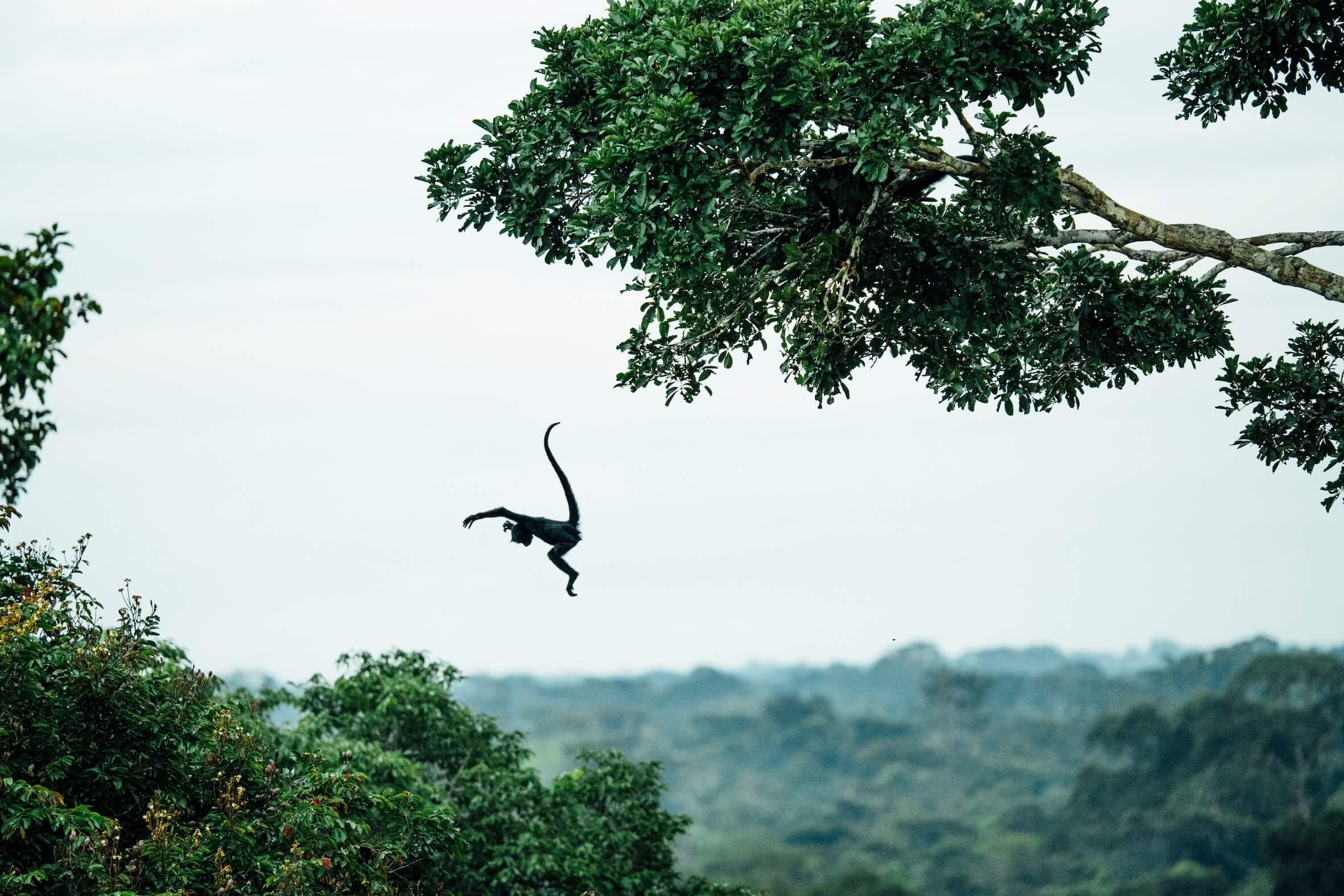In March, we were once again finally able to visit our protected areas in Peru! We are really impressed by what is being created there, and how the projects and the organization are developing!
See for yourself:
A few impressions from the rainforest

The teams from WI Germany and WI Peru engaged in an intensive, valuable exchange.

Our landing stage on the Tambopata River - from there we head to the Secret Forest research station.

The howler monkeys (Alouatta palliata) are also already on site.

Our arrival was preceded by a few heavy rains, which is why the banks of the Tambopata were still very wet and muddy after the water level had receded.

The lowland tapir (Tapirus terrestris) on the shore is not bothered by this.

The steep slope also posed a challenge when the solar panels for our new Forest Guardian station arrived.

The large panels, which we have the Audi Environmental Foundation to thank for, were transported through the forest to the station using pure muscle power ...

... to form the missing roof of the new green classroom.

During our expedition, we also visited our agroforestry trial area, where Bruno, part of our forest guardian team, showed us the current status of our bee project.

Bruno is our bee expert. This knowledge has been passed down in his family for generations, as there is no beekeeping training center in Peru.

We check which plants are particularly interesting for the bees and whether they are already producing enough honey. This knowledge should help the locals to develop beekeeping as a new source of income.

We then measured the plants growing in our trial area and tested how well they grow in which environment.

Every step is documented by Šimon, our agroforestry coordinator.

Fabian Kahl and his partner Yvonne also lent a hand with the planting. After the work was done, each of the helpers was allowed to give one of the plants a name.

However, Mona only had eyes for one plant: her beloved coffee!

Together with Gabriela (1st from left), our botany coordinator, we planted not only coffee but also many young açai palms, whose fruits are known here as a superfood.

Research is carried out diligently at night; for example during the caiman transect, we investigate the population development of the three native caiman species.

Sometimes the rainforest also becomes an office! Here, Marie evaluates the audio sensors that help us monitor the bird population.

Of course, there is also plenty of fun to be had. Dr. Chris Kirkby demonstrates his secret talent with Brazil nuts.

Many of our research projects take us deep into the Secret Forest.

It's easy to get lost in the thousands of shades of green.

From the lower levels of the rainforest ...

... to the very top, thanks to drones from our partners DGI and Quantum Systems.

In the crowns of the rainforest giants, we observe some daring maneuvers.

We simply can't get enough of experiencing the rainforest and its many inhabitants from above ...

... or rather at eye level. As we suddenly found ourselves face to face with this cute three-fingered sloth (Bradypus).

A little further down we came across this lively brown-backed tamarin (Saguinus fuscicollis).

Fabian Kahl's climbing skills are (almost) on a par with those of the jungle dwellers.

The lowest level of the rainforest is also bursting with life. Be it this small pool tree frog (boana lanciformis) ...

... or this bushmaster (Lachesis), the deadliest snake in the area! A rare find, and more curious than aggressive.

Every now and then you also encounter forest spirits ...

... or inspired biologists.

At dawn we go to a "clay lick", a "clay corner" ...

... on the hunt for a particularly colorful rainforest inhabitant.

The banded macaws (Psittacara mitrata)! They don't let us disturb them ...

... similar to this caiman (Caiman crocodilus) relaxing in the sun.

Our expedition was a complete success - and we can hardly wait to return to Peru next year!
Together with us, team members from our longest-standing partner, the Dresden-based tour operator DIAMIR, also made the journey halfway around the world. On site, they saw our work for themselves and visited the forest that they have been protecting for over four years.
Fabian Kahl, known from "Bares für Rares", and his partner Yvonne were also part of the team. The jewelry and antique experts accompanied us to our protected areas and looked over our shoulders and those of the Fauna Forever researchers as they went about their daily work. Together with his community, Fabian will also support us in protecting the Peruvian rainforest in the future and is increasingly raising awareness on his social media channels about topics such as the consequences of gold mining in the rainforest and environmental destruction.
Together, we were able to admire the initial progress made in our recently launched agroforestry projects and were also able to lend a hand with the planting. We also got to know the new members of our Forest Guardian team, who work tirelessly every day to protect the forests.
While we were there, they also started to build a solar power plant! Thanks to the support of the Audi Environmental Foundation, the Secret Forest research and Forest Guardian station now finally has self-sufficient energy. This means: no more transporting fuel from the city and no noisy generator!
And finally, we met with the scientists from the Tambopata Research Center to discuss their macaw research and conservation project in order to explore possible cooperation.
As you can see, many things are being planned or are already in progress. So 2024 will definitely be no less exciting than last year! And the next expedition is already just around the corner ...

